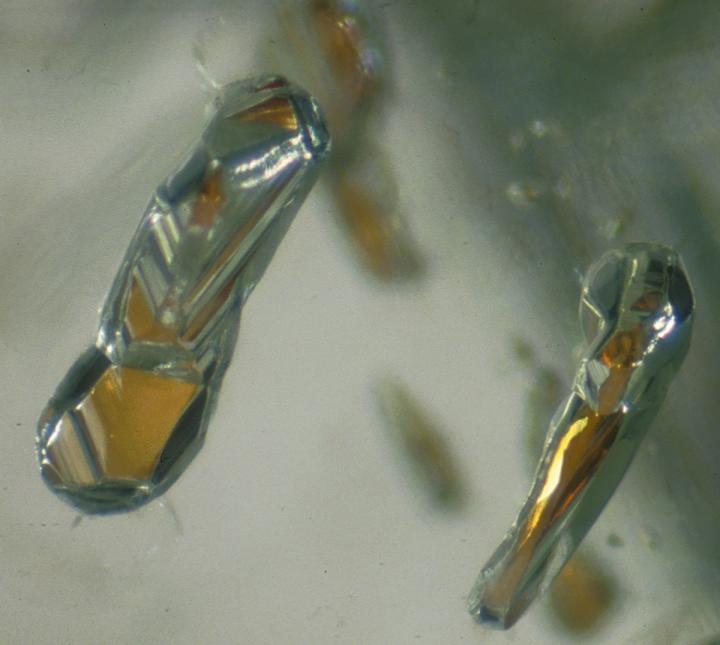Scientists find oxidized iron deep within the Earth's interior

Diamonds with garnet inclusions can form at depths down to 550 kilometres below the surface. Image: Jeff W. Harris, University of Glasgow. Credit: Jeff W. Harris, University of Glasgow.
Scientists digging deep into the Earth's mantle recently made an unexpected discovery.
Five hundred and fifty kilometres below the Earth's surface, they found highly oxidized iron, similar to the rust we see on our planet's surface, within garnets found within diamonds.
The result surprised geoscientists around the globe because there is little opportunity for iron to become so highly oxidized deep below the Earth's surface.
Surprising discovery
“On Earth's surface, where oxygen is plentiful, iron will oxidize to rust,” explained Thomas Stachel, professor in the Department of Earth and Atmospheric Sciences at the University of Alberta, who co-authored the study. “In the Earth's deep mantle, we should find iron in its less oxidized form, known as ferrous iron, or in its metal form. But what we found was the exact opposite–the deeper we go, the more oxidized iron we found.”
This discovery suggests that something oxidized the rocks in which the superdeep diamonds were founds. The scientists suspect that it was molten carbonate, carried to these great depths in sinking slabs of ancient sea floor.
“It's exciting to find evidence of such profound oxidation taking place deep inside the Earth,” said Stachel, Canada Research Chair in diamonds.
Carbon cycle
The study also has implications for understanding the global carbon cycle that involves the transport of surface carbon back into the Earth's mantle.
“We know lots about the carbon cycle on Earth's surface, but what about in the mantle?” explained Stachel. “Our study suggests that surface carbon goes down as carbonates to at least 550 kilometres below the surface. There, these carbonates may melt and react with the surrounding rocks, eventually crystallizing into diamonds. Diamonds can then be taken down even deeper in the mantle.”
The study shows that the carbon cycle extends deep into mantle, possibly all the way down to the core-mantle boundary, with billion year storage times.
###
The study was led by the University of Oxford with support from researchers in the Faculty of Science at the University of Alberta. “Oxidized iron in garnets from the mantle transition zone,” was published in Nature Geoscience (doi: 10.1038/s41561-017-0055-7).
Media Contact
All latest news from the category: Earth Sciences
Earth Sciences (also referred to as Geosciences), which deals with basic issues surrounding our planet, plays a vital role in the area of energy and raw materials supply.
Earth Sciences comprises subjects such as geology, geography, geological informatics, paleontology, mineralogy, petrography, crystallography, geophysics, geodesy, glaciology, cartography, photogrammetry, meteorology and seismology, early-warning systems, earthquake research and polar research.
Newest articles

Airborne single-photon lidar system achieves high-resolution 3D imaging
Compact, low-power system opens doors for photon-efficient drone and satellite-based environmental monitoring and mapping. Researchers have developed a compact and lightweight single-photon airborne lidar system that can acquire high-resolution 3D…

Simplified diagnosis of rare eye diseases
Uveitis experts provide an overview of an underestimated imaging technique. Uveitis is a rare inflammatory eye disease. Posterior and panuveitis in particular are associated with a poor prognosis and a…

Targeted use of enfortumab vedotin for the treatment of advanced urothelial carcinoma
New study identifies NECTIN4 amplification as a promising biomarker – Under the leadership of PD Dr. Niklas Klümper, Assistant Physician at the Department of Urology at the University Hospital Bonn…





















